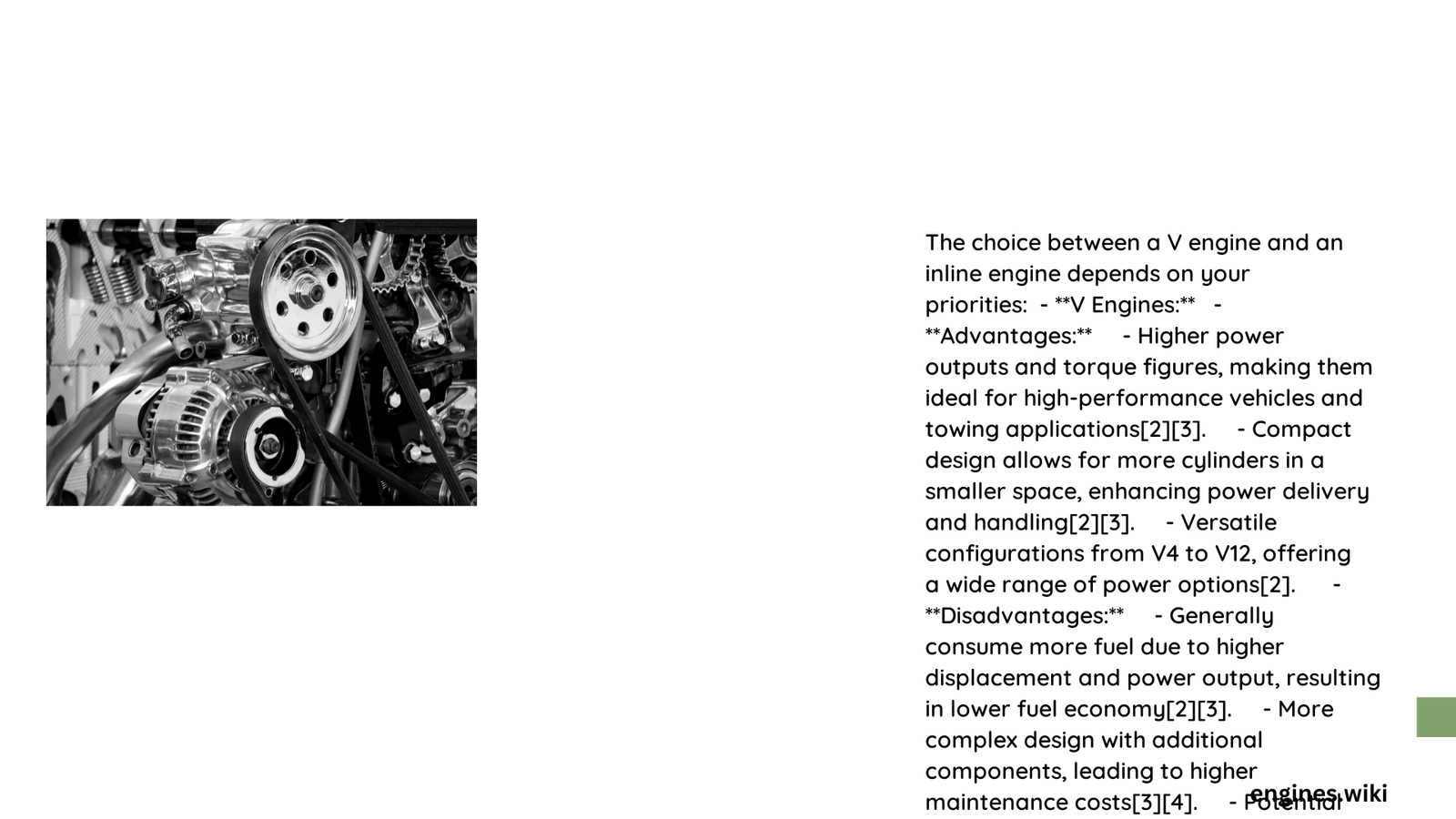Engine configurations represent critical technological decisions in automotive design, where V engines and inline engines compete for supremacy across performance metrics. The choice between these configurations impacts vehicle dynamics, power output, fuel efficiency, and overall driving experience. While no universal solution exists, understanding nuanced differences helps automotive engineers and enthusiasts make informed decisions about engine selection.
What Makes V Engines Unique?
V engines distinguish themselves through compact design and exceptional power density. Their configuration allows multiple cylinders to be arranged in a compact V-shaped layout, enabling higher cylinder counts within smaller engine bays.
Performance Characteristics
| Engine Type | Average Horsepower | Torque Range | Typical Applications |
|---|---|---|---|
| V8 Engine | 400-600 HP | 400-500 lb-ft | Sports Cars, Trucks |
| Inline-4 Engine | 150-250 HP | 150-250 lb-ft | Sedans, Compact Cars |
| Inline-6 Engine | 300-450 HP | 300-400 lb-ft | Luxury Vehicles |
Why Do Power Outputs Differ?

V engines typically generate higher power outputs due to several fundamental design advantages:
- Cylinder Arrangement: Allows more cylinders in compact spaces
- Balanced Force Distribution: Reduces internal mechanical stress
- Enhanced Thermal Management: Improved heat dissipation mechanisms
Fuel Efficiency Considerations
Inline engines generally demonstrate superior fuel efficiency compared to V configurations. Key factors include:
- Fewer moving parts
- Lighter overall weight
- Simpler mechanical design
- Reduced internal friction
Can Compact Design Compensate for Efficiency Limitations?
V engines excel in weight distribution and packaging efficiency. Their compact nature provides significant advantages:
- Centralized Mass: Improves vehicle handling
- Lower Center of Gravity: Enhances stability
- Flexible Mounting Options: Adaptable to various vehicle architectures
Real-World Performance Metrics
Comparative analysis reveals nuanced performance differences:
- Acceleration: V8 engines typically achieve 0-60 mph faster
- Fuel Economy: Inline-4 engines provide better miles per gallon
- Maintenance: Inline engines generally require less complex servicing
What Determines the Best Engine Configuration?
Selecting between V and inline engines depends on multiple factors:
- Vehicle type
- Intended performance requirements
- Fuel efficiency goals
- Manufacturing constraints
- Budget considerations
Expert Recommendations
Automotive engineers suggest:
– Sports cars: Prefer V configurations
– Economy vehicles: Choose inline designs
– Luxury sedans: Consider inline-6 or V6 options
Technical Complexity and Manufacturing
V engines involve more intricate manufacturing processes:
– Complex cylinder head design
– Sophisticated balancing mechanisms
– Higher production costs
Inline engines offer:
– Simpler manufacturing
– Lower production expenses
– More straightforward maintenance
Conclusion
No definitive answer exists regarding whether V engines are universally superior. Each configuration presents unique strengths and limitations. Vehicle-specific requirements ultimately determine the most suitable engine design.
Recommendations for Consumers
- Assess personal driving needs
- Consider long-term maintenance costs
- Evaluate performance versus efficiency trade-offs
- Consult automotive professionals
Reference:
– SAE International
– Society of Automotive Engineers
– Automotive Research Center
